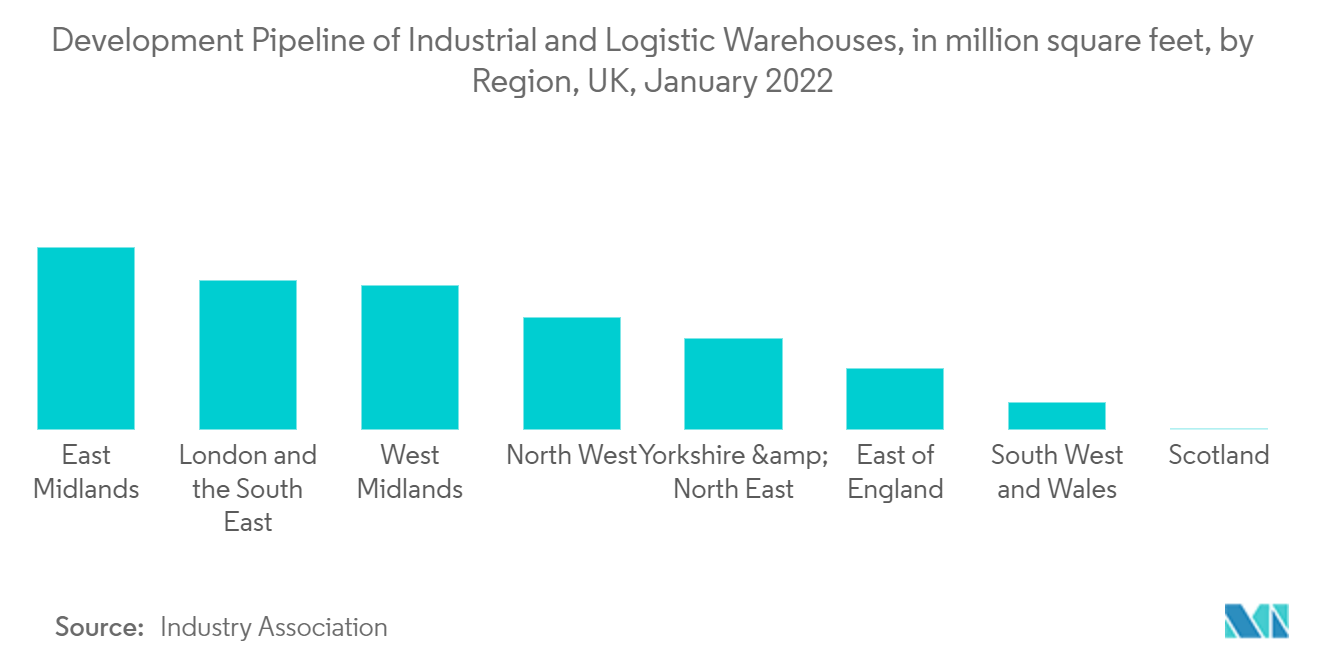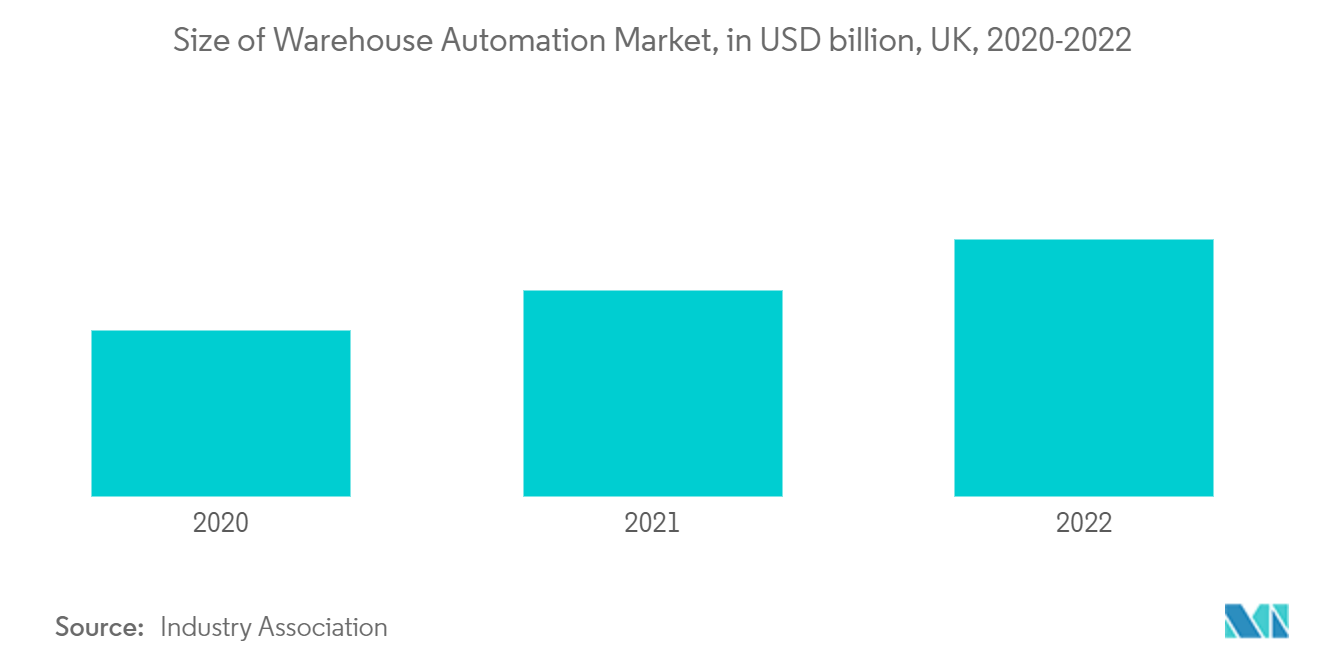Market Trends of United Kingdom Warehousing and Distribution Logistics Industry
This section covers the major market trends shaping the UK Warehousing & Distribution Logistics Market according to our research experts:
E-commerce Growth Driving the Warehouse Development
The impact of the coronavirus pandemic has led to people buying online a lot more than they used to. Online shopping as a percentage of all retail sales peaked at nearly 38% in January 2021, having stood at 8% at the start of 2011 and 19% in February 2020. It has since fallen back but remains around 28% in the latest period (February 2022). This has contributed to a sharp rise in new warehouse construction projects. New orders for the building of warehouses in the UK were worth GBP 5.6 billion (USD 6.75 billion) in 2021; this is more than in any year since 1985. The East Midlands accounted for one-fifth (20%) of the spending in 2021, according to the Office for National Statistics (ONS) new orders data supplier, Barbour ABI. The other main locations for warehouse spending were Yorkshire and the Humber (16%), the East of England (13%), and the West Midlands (13%). The United Kingdom (UK) has the most advanced e-commerce market in Europe. In 2022, the country was expected to have nearly 60 million e-commerce users, leaving only a minority of the population as non-digital buyers. As such, e-commerce has undeniably become the norm for shoppers everywhere in the UK, and there is an ample amount of data to support this.
With a project value of USD 322 million, the Panattoni UK Development-Pantattoni Park Avonmouth Logistics Center-Bristol project was the largest warehouse construction project in the United Kingdom, on which construction started in Q4 2022. The Db Symmetry-Symmetry Park Doncaster-Doncaster project was the third largest, the Peveril Securities/Premcor Estates-Catalyst Logistic Park-Sheffield project was the fourth largest, and the Stoford Devs-Redditch Gateway Logistics Center-Worcestershire project was the fifth largest, with project values of USD 80 million, USD 67 million, and USD 35 million, respectively. Among the five largest projects, the Db Symmetry-Symmetry Park Doncaster-Doncaster project is the longest in terms of the completion date, with construction expected to be completed in Q4 2023. On the other hand, construction on the Peveril Securities/Premcor Estates-Catalyst Logistic Park-Shirley project is expected to be finished in Q1 2023, which is the shortest time frame.

Increasing Adoption of Warehouse Automation
In the next few years, automation is expected to be more productive and worth more money than human labor. Businesses worldwide are automating warehouses in response to changing operational environments. Increasing labor expenses, a labor shortage, and increased throughput needs are just a few of them. Furthermore, innovations in automation, such as lower costs and increased scalability, greatly boost warehouse automation. The size of the organization and the complexity of its supply chain are the key determining factors for how much businesses invest in warehouse automation technology. It's probably fair to say that automation is still in its infancy in the UK warehousing sector, and most logistics SMEs are, at best, 'partially automated'. However, the pandemic and the challenges of lockdown have made a growing number of businesses give serious thought to the benefits of automation-and, at the beginning of 2022, there were more businesses with a clear timeline and budget in place for automation than there were in the years before COVID-19.
Brexit resulted in a massive departure of EU nationals employed in the UK logistics industry. It has led to a shortfall of 330,000 people in the UK labor force, mostly in the low-skilled economy, a report by leading researchers has found. Transport and warehousing were the worst hit, with a reduction of 128,000 EU workers, or 8% of total employment in that sector. There is currently a scarcity of trained heavy goods vehicle (HGV) drivers and material handling equipment (MHE) operators within the space. This has led the industry players to look for automation. Most larger UK warehouses exceed 32 feet in height and occupy massive space. Much of this space is underutilized, and it all comes at a significant cost in a country where commercial space is at a premium. Autonomous mobile robots (AMRs) enable picking inside the tight confines of racking walls, allowing better use of space and opening the door to smaller and more affordable warehouse solutions for SMEs. Thus, more and more companies will be adopting warehouse automation in the near future.

